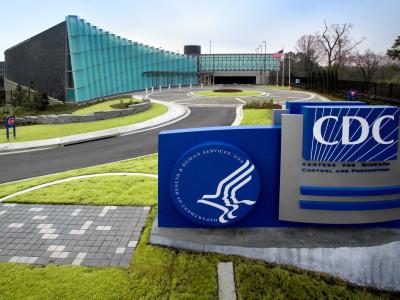Drug-resistant Salmonella Typhi in US patients linked to Pakistan, Iraq
Researchers from the Centers for Disease Control and Prevention (CDC) have identified 33 cases of extensively drug-resistant (XDR) Salmonella enterica serotype Typhi in the United States linked to travel in Pakistan and Iraq, according to an update today in the CDC's Morbidity and Mortality Weekly Report (MMWR).
The 33 isolates of XDR Salmonella Typhi, the bacterium that causes typhoid fever, were identified during surveillance conducted from February 2018 through August 2019; none had been detected prior to 2018, when the CDC began surveillance for the pathogen.
Thirty of the isolates came from cases of XDR typhoid fever linked to travel to Pakistan, where an outbreak that began in Sindh province in 2016 has now sickened more than 10,000 people. Antimicrobial susceptibility testing and whole-genome sequencing showed that the isolates were resistant to ceftriaxone, ampicillin, chloramphenicol, ciprofloxacin, nalidixic acid, streptomycin, sulfisoxazole, and trimethoprim-sulfamethoxazole.
The three other isolates were linked to travel in Iraq and were from a strain genetically distinct from the XDR strain associated with travel in Pakistan. Like the Pakistan strain, the ceftriaxone resistance in the Iraq strain is plasmid mediated and has the potential to spread to other bacteria, but the Iraq strain is susceptible to other antibiotics, including trimethoprim-sulfamethoxazole. All 33 isolates were susceptible to azithromycin and meropenem.
The authors say US clinicians should remain vigilant for ceftriaxone-resistant Salmonella Typhi in patients who have traveled to Pakistan or Iraq.
"Clinicians should request antimicrobial susceptibility testing for all Typhi isolates and tailor patient treatment accordingly," they write. "All patients should be asked about travel, and special consideration should be given to empiric treatment for patients who have recently returned from Iraq or Pakistan."
They add that clinicians should advise patients travelling to Pakistan and Iraq to receive pre-travel typhoid vaccination and practice safe food and water precautions, as Salmonella typhi is usually transmitted by contaminated water or food.
May 21 MMWR report
European Commission aims to cut farm, fishery antibiotic use
The European Commission yesterday announced new targets for reducing sales of antibiotics used on farms and in aquaculture.
The targets, part of the Commission's Farm to Fork Strategy for a fair, healthy, and environmentally friendly food system, call for a 50% reduction in sales of antibiotics for farmed animals and aquaculture in European Union member states by 2030. The strategy also calls for a 50% reduction in pesticide use, a 20% reduction in the use of fertilizers, and for making 25% of agricultural land organic by 2030.
Commission officials say the strategy will enable the EU to transition to a sustainable food system that safeguards food security, ensures access to healthy diets, reduces the environmental and climate footprint of the EU food system, and strengthens resilience to future pandemics.
"The Farm to Fork Strategy will make a positive difference across the board in how we produce, buy and consume our food that will benefit the health of our citizens, societies and the environment," Stella Kyriakides, Commissioner for Health and Food Safety, said in a press release. "It offers the opportunity to reconcile our food systems with our planet's health, to ensure food security and meet the aspirations of Europeans for healthy, equitable and eco-friendly food."
The Commission says antibiotic sales will be monitored on an annual basis.
May 20 European Commission press release
Multimodal initiative tied to less fluoroquinolone use in healthcare network
A multimodal stewardship initiative at a healthcare network in Dallas was associated with reduced total and inappropriate fluoroquinolone prescribing in outpatient settings, researchers reported today in Open Forum Infectious Diseases.
The initiative implemented at Parkland Health & Hospital System in November 2016 involved four interventions: recurring education from an infectious diseases (ID) pharmacist on the risks, benefits, and appropriate use of fluoroquinolones; the addition of Food and Drug Administration warnings to all fluoroquinolone orders; the suppression of ciprofloxacin susceptibilities from microbiology reports when appropriate; and the creation of an outpatient order set for cystitis.
The interventions were implemented because of concerns about adverse drug events linked to fluoroquinolone use, associated risks for Clostridioides difficile infection, and rising fluoroquinolone resistance in urinary pathogens.
To measure the impact of these interventions, researchers reviewed outpatient chart orders in which a fluoroquinolone was prescribed. Inappropriate use was defined as a fluoroquinolone prescription for cystitis, bronchitis, and sinusitis in patients without a history of Pseudomonas aeruginosa or multidrug-resistant organisms and with no drug allergies that might preclude use of other antibiotics.
A review of 1,033 outpatient fluoroquinolone prescriptions found that, after all four interventions were implemented, total fluoroquinolone prescribing per 1,000 patient visits fell by 39%, with the greatest decline seen in primary care clinics (51%), followed by the emergency department (33%). Inappropriate fluoroquinolone use fell from 53% to 34%. More than 90% of inappropriate fluoroquinolone prescriptions were given for cystitis, while bronchitis and sinusitis accounted for only 4.4% and 1.6% of inappropriate indications, respectively.
"Continued efforts to support the positive effects of these interventions are likely necessary to sustain or improve the rates of appropriate fluoroquinolone use in the outpatient setting," the authors conclude.
May 21 Open Forum Infect Dis study













